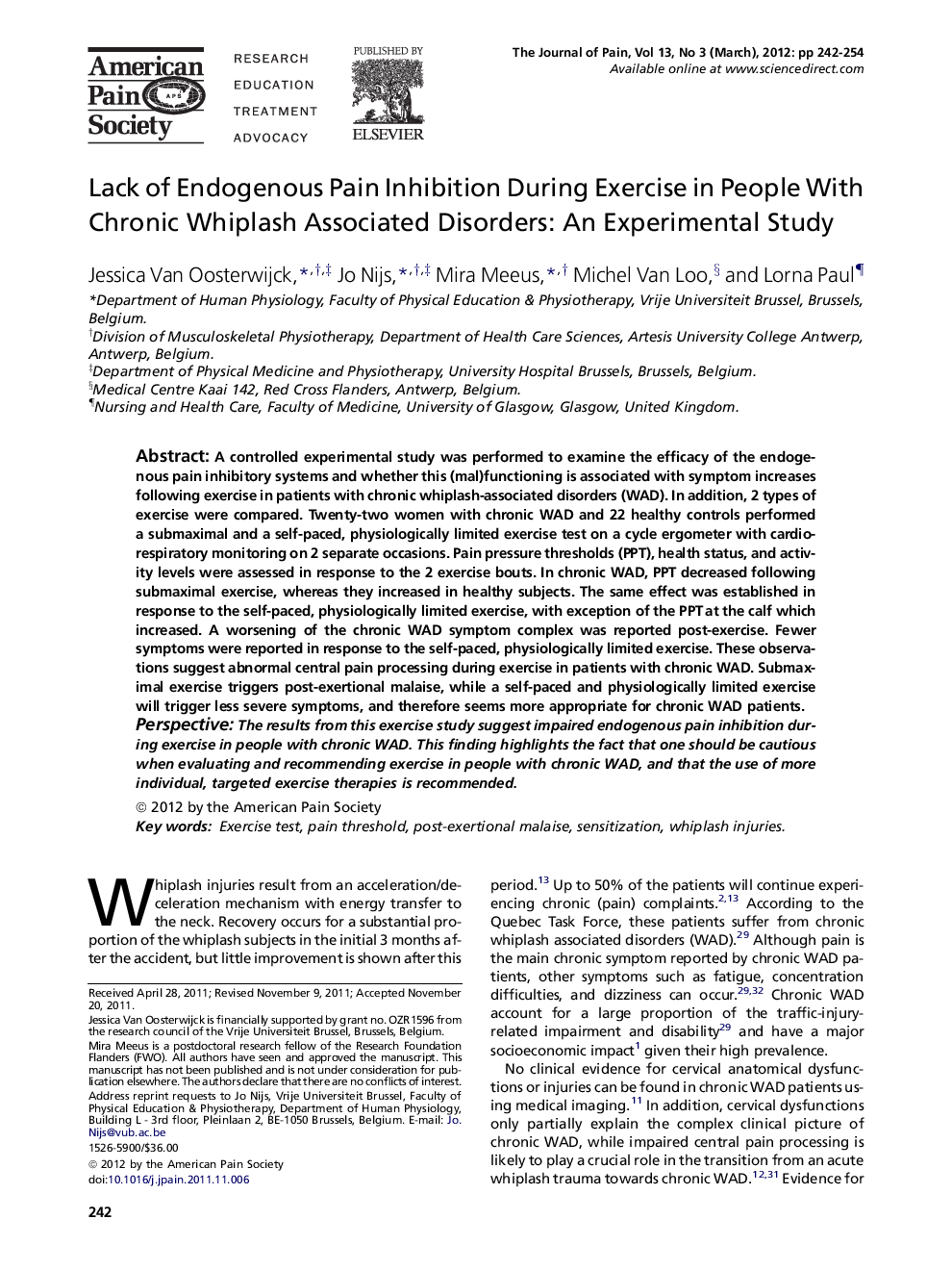| Article ID | Journal | Published Year | Pages | File Type |
|---|---|---|---|---|
| 2732389 | The Journal of Pain | 2012 | 13 Pages |
A controlled experimental study was performed to examine the efficacy of the endogenous pain inhibitory systems and whether this (mal)functioning is associated with symptom increases following exercise in patients with chronic whiplash-associated disorders (WAD). In addition, 2 types of exercise were compared. Twenty-two women with chronic WAD and 22 healthy controls performed a submaximal and a self-paced, physiologically limited exercise test on a cycle ergometer with cardiorespiratory monitoring on 2 separate occasions. Pain pressure thresholds (PPT), health status, and activity levels were assessed in response to the 2 exercise bouts. In chronic WAD, PPT decreased following submaximal exercise, whereas they increased in healthy subjects. The same effect was established in response to the self-paced, physiologically limited exercise, with exception of the PPT at the calf which increased. A worsening of the chronic WAD symptom complex was reported post-exercise. Fewer symptoms were reported in response to the self-paced, physiologically limited exercise. These observations suggest abnormal central pain processing during exercise in patients with chronic WAD. Submaximal exercise triggers post-exertional malaise, while a self-paced and physiologically limited exercise will trigger less severe symptoms, and therefore seems more appropriate for chronic WAD patients.PerspectiveThe results from this exercise study suggest impaired endogenous pain inhibition during exercise in people with chronic WAD. This finding highlights the fact that one should be cautious when evaluating and recommending exercise in people with chronic WAD, and that the use of more individual, targeted exercise therapies is recommended.
